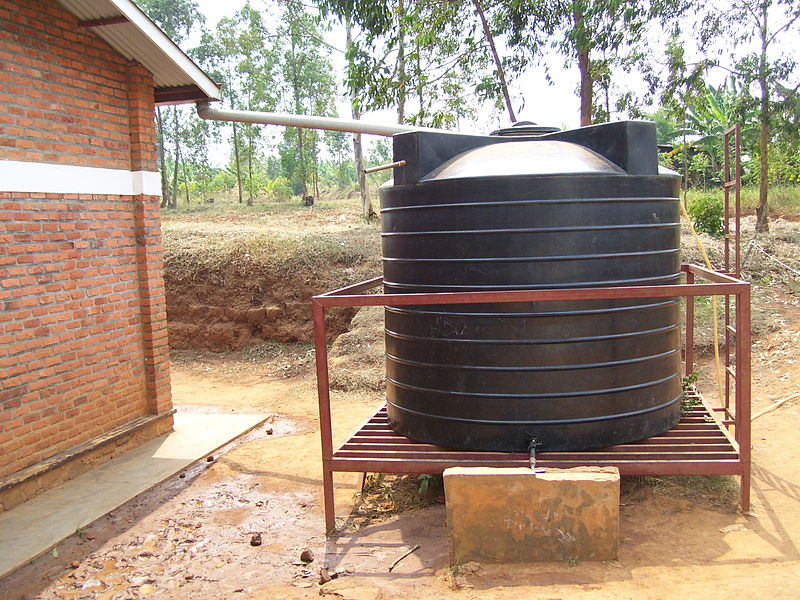Since there is a declining availability of fresh water and increasing demand, the need has arisen to conserve and effectively manage this precious life-giving resource for sustainable development.
Given that water availability from sea/ocean, due to the high cost of desalination, is considered negligible, India has to take quick steps and make effective policies and laws, and adopt effective measures for its conservation.
Besides developing water-saving technologies and methods, attempts are also to be made to prevent pollution. There is need to encourage watershed development, rainwater
harvesting, water recycling, and reuse, and conjunctive use of water for sustainable water supply in long run.
Recycle and Reuse of Water
Another way through which we can improve freshwater availability is by recycling and reusing. The use of water of lesser quality such as reclaimed wastewater would be an attractive option for industries for cooling and fire fighting to reduce their water cost.
Similarly, in urban areas, water after bathing and washing utensils can be used for gardening. Water used for washing vehicles can also be used for gardening.
This would conserve the better quality of water for drinking purposes. Currently, the recycling of water is practiced on a limited scale. However, there is enormous scope for replenishing water through recycling.
Watershed Management
Watershed management basically refers to the efficient management and conservation of
surface and groundwater resources. It involves the prevention of runoff and storage and recharge of groundwater through various methods like percolation tanks, recharge wells, etc.
However, in broad sense watershed management includes conservation, regeneration and judicious use of all resources – natural (like land, water, plants, and animals) and the human within a watershed.
Watershed management aims at bringing about a balance between natural resources on the one hand and society on the other. The success of watershed development largely depends upon community participation.
The Central and State Governments have initiated many watershed development and management programmes in the country. Some of these are being implemented by non-
governmental organizations also.
Haryali is a watershed development project sponsored by the Central Government which aims at enabling the rural population to conserve water for drinking, irrigation, fisheries, and
afforestation. The Project is being executed by Gram Panchayats with people’s participation.
Neeru-Meeru (Water and You) programme (in Andhra Pradesh) and Arvary Pani Sansad
(in Alwar, Rajasthan) have taken up constructions of various water-harvesting structures such as percolation tanks, dug out ponds (Johad), check dams, etc., through people’s participation.
Tamil Nadu has made water harvesting structures in the houses compulsory. No building can be constructed without making structures for water harvesting.
Watershed development projects in some areas have been successful in rejuvenating environment and economy.
However, there are only a few success stories. In majority of cases, the programme is still in its nascent stage.
There is a need to generate awareness regarding the benefits of watershed development and management among people in the country, and through this integrated water resource management approach, water availability can be ensured on a sustainable basis.
Rainwater Harvesting
Rainwater harvesting is a method to capture and store rainwater for various uses. It is also
used to recharge groundwater aquifers. It is a low-cost and eco-friendly technique for preserving every drop of water by guiding the rainwater to borewells, pits, and wells.
Rainwater harvesting increases water availability, checks the declining groundwater table, improves the quality of groundwater through dilution of contaminants, like fluoride and nitrates, prevents soil erosion, and flooding and arrests saltwater intrusion in coastal areas if used to recharge aquifers.
Rainwater harvesting has been practised through various methods by different communities in the country for a long time.
Traditional rainwater harvesting in rural areas is done by using surface storage bodies, like lakes, ponds, irrigation tanks, etc.
In Rajasthan, rainwater harvesting structures locally known as Kund or Tanka (a covered underground tank) are constructed near or in the house or village to store harvested rainwater.
There is a wide scope to use rainwater harvesting techniques to conserve precious water resources. It can be done by harvesting rainwater on rooftops and open spaces.
Harvesting rainwater also decreases the community dependence on groundwater for
domestic use.
Besides bridging the demand-supply gap, it can also save energy to pump
groundwater as recharge leads to a rise in the groundwater table. These days rainwater harvesting is being taken up on a massive scale in many states in the country.
Urban areas can specially benefit from rainwater harvesting as water demand has already outstripped supply in most of the cities and towns.
Apart from the above mentioned factors, the issue desalinisation of water particularly in coastal areas and brackish water in arid and semi-arid areas, transfer of water from water surplus areas to water deficit areas through interlinking of rivers can be important remedies for solving the water problem in India (read more about interlinking of rivers).
However, the most important issue from the point of view of individual users, households, and communities is the pricing of water.

